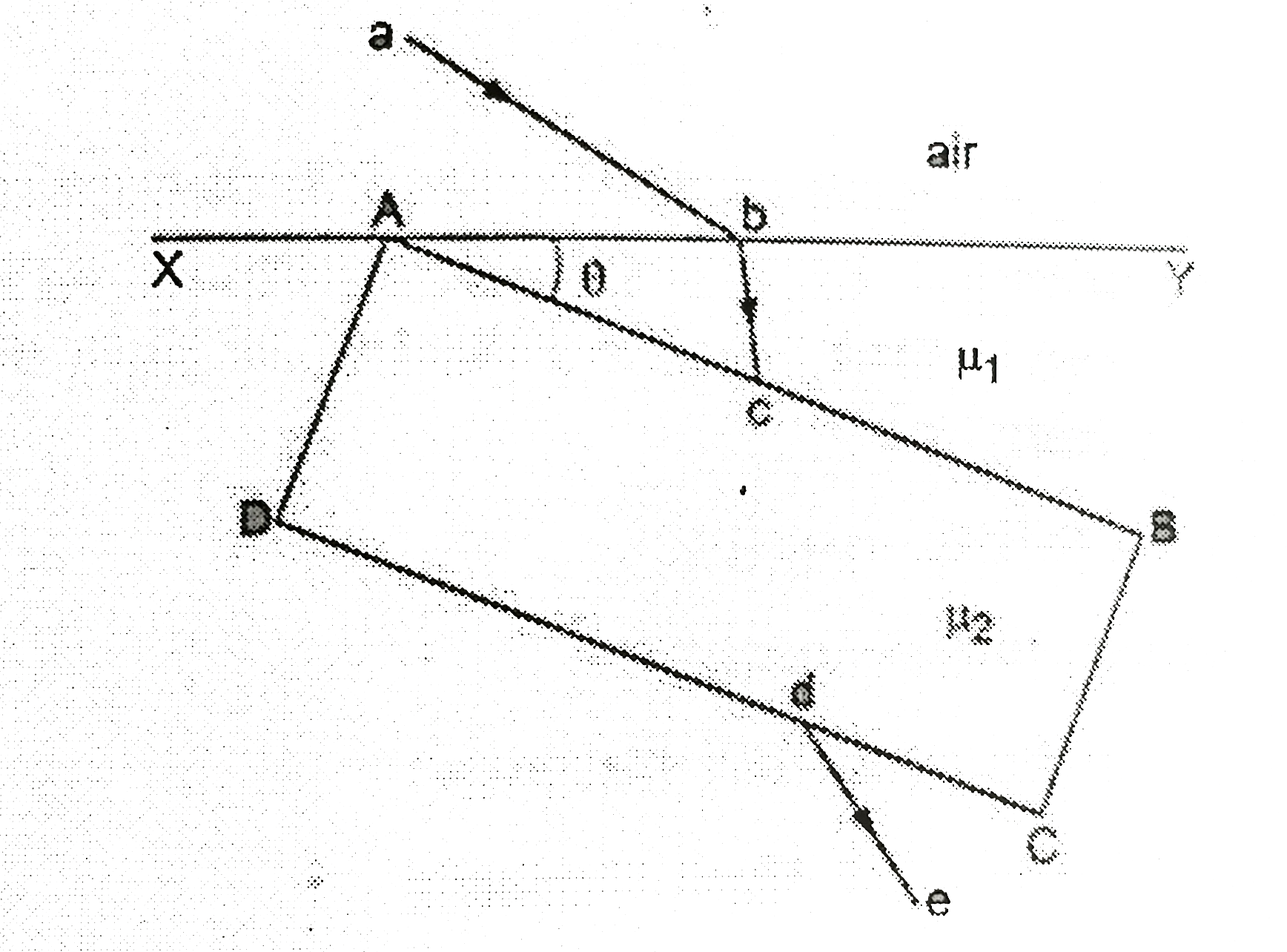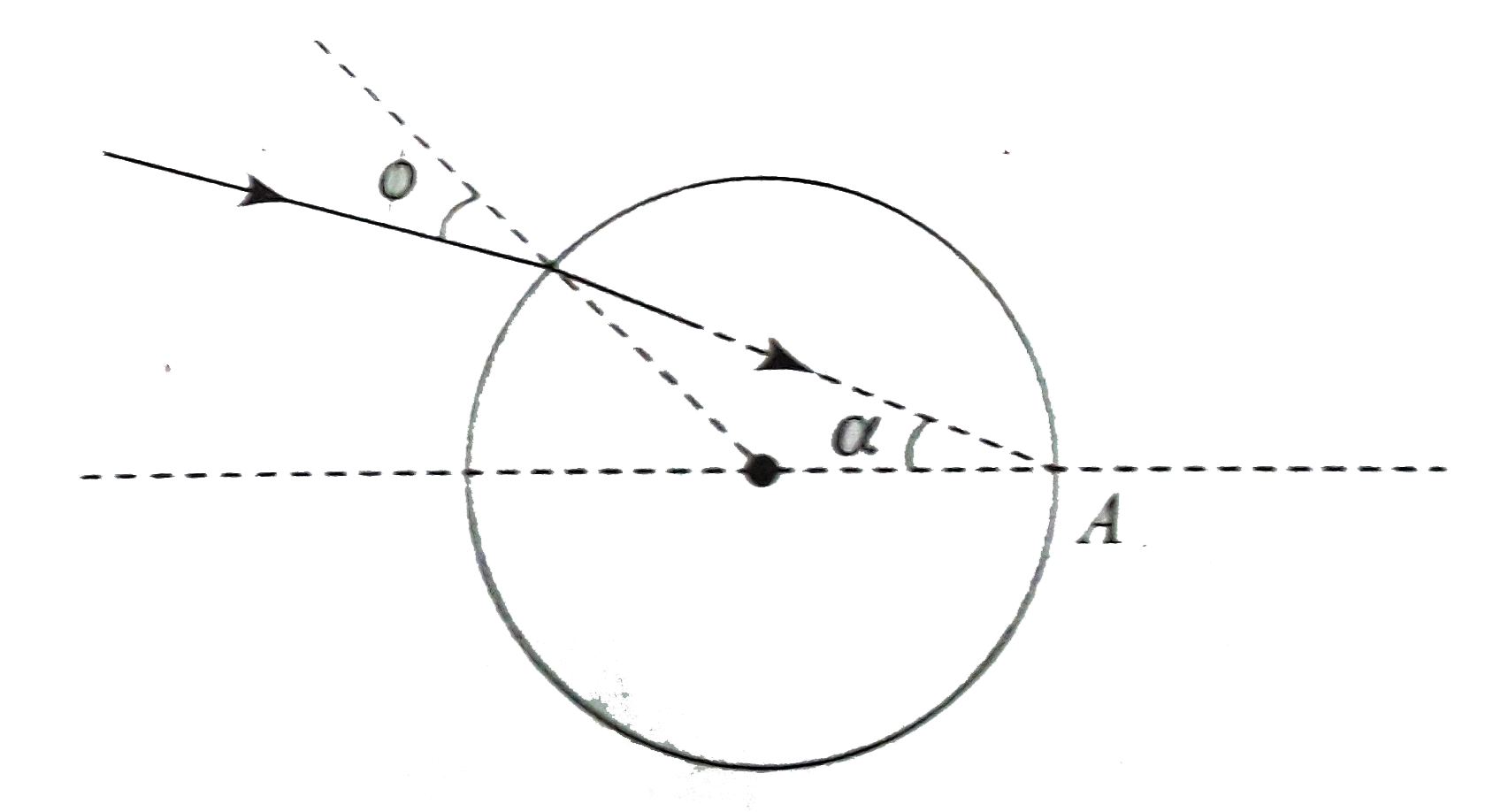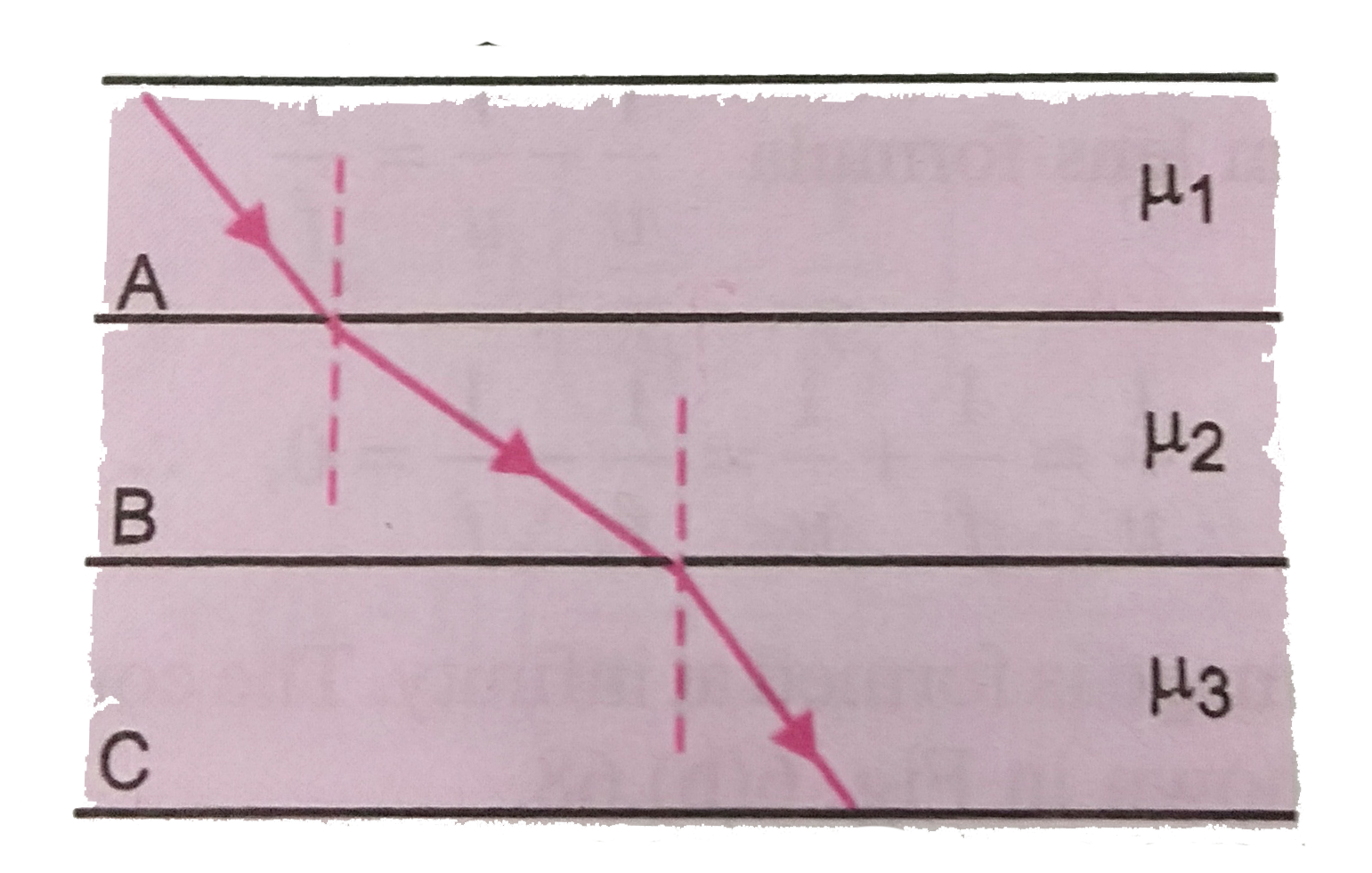
A ray of light ab passing through air enters a liquid of refractive index μ1 at the boundary XY. In the liquid, the ray is shown as bc. The angle between ab and bc ( angle of deviation) is δ. The ray then passes through a rectangular salb ABCD of refractive index μ2(μ2>μ1) and emerges from the slab as the ray de. The angle between XY and AB is θ. The angle between ab and de is
δ
δ+θ
δ+sin−1(μ1μ2)
δ+θ−sin−1(μ1μ2)
The correct Answer is:A
Topper's Solved these Questions
- PRACTICE WORKSHEET 1BOOK - D MUKHERJEECHAPTER - PRACTICE WORKSHEET 1EXERCISE - Assertion- Reason Type
3 Videos
- PRACTICE WORKSHEET 1BOOK - D MUKHERJEECHAPTER - PRACTICE WORKSHEET 1EXERCISE - Linked- Comprehension Type
3 Videos
- OPTICSBOOK - D MUKHERJEECHAPTER - OPTICSEXERCISE - All Questions
47 Videos
- PRACTICE WORKSHEET 2BOOK - D MUKHERJEECHAPTER - PRACTICE WORKSHEET 2EXERCISE - Linked- Comprehension Type
4 Videos
Similar Questions
Path of ray of light passing through three liquids of refractive indices μ1,μ2,μ3 is as shown in Fig. Which liquid has the smallest index of refraction ?
 .
.
View SolutionA ray of light enters a spherical drop of water of refractive index μ as shown in figure.

Q. An expression of the angle between incident ray and emergent ray (angle of deviation) as shown in figure.

View Solution
Knowledge Check
A ray of light enters a spherical drop of water of refractive index μ as shown in figure.

Q. An expression of the angle between incident ray and emergent ray (angle of deviation) as shown in figure.
 A0∘BϕCα−ϕDπ−4α+2ϕ
A0∘BϕCα−ϕDπ−4α+2ϕA ray of light enters a spherical drop of water of refractive index p as shown in the figure.
An expression of the angle between incidence ray and emergent ray (angle of deviation) as shown in the figure is

 A0∘BϕCα−ϕDπ−4α+2ϕ
A0∘BϕCα−ϕDπ−4α+2ϕA ray of light passing through a prism of refracting angle 60∘ has to deviate by at least 40∘. Then refractive index of prism should be
A≤√2B<√2C<1D≥1
Path of a ray of light passing through three liquids of reflective indices μ1,μ2,μ3 is as shown in Fig. Which liquid has the smallest index of reflection ?

View SolutionA ray of light enters a spherical drop of water of refractive index p as shown in the figure.
An expression of the angle between incidence ray and emergent ray (angle of deviation) as shown in the figure is

View SolutionA ray of light falls on a glass plate of refractive index μ=1.5.
What is the angle of incidence of the ray if the angle between the reflected and
refracted rays is 90∘?
View SolutionA ray of light falls on a glass plate of refractive index μ=1.5.
What is the angle of incidence of the ray if the angle between the reflected and
refracted rays is 90∘?
View SolutionA ray of light falls on a glass plate of refractive index μ=1.5.
What is the angle of incidence of the ray if the angle between the reflected and
refracted rays is 90∘?
View Solution
